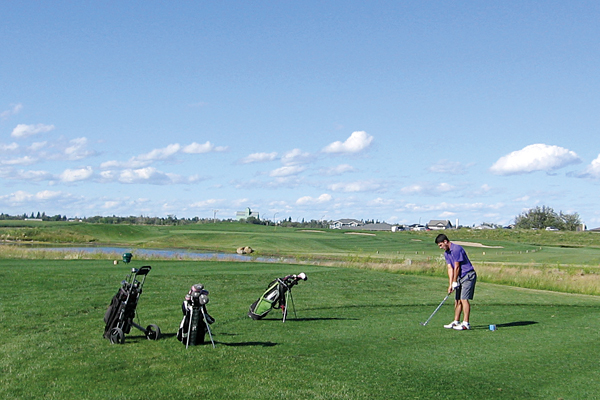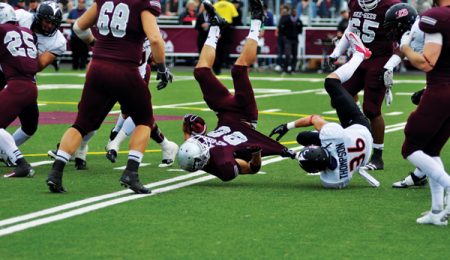Getting started on the greens
Photo: Sarah Nolette
The golf season is finally getting started, and it’s a good time to learn how to play—and it doesn’t have to be as expensive as everyone seems to think.
There are a few tricks to keep the friendly game in your budget. As a golfer, I will admit this sport is an investment. Similar to skiing, or boarding, you need your equipment to fit you.
Choosing equipment can be tricky. You first need to figure out if you will be swinging left or right. Going to your local golf store and trying out a couple clubs will give you the answer. Or if you’re a hockey player, you might feel comfortable swinging the same way you would shoot a puck.
If you want to spend less than $100 on your first set of clubs, check out Value Village or garage sales. You can sometimes find them for less than $30. The clubs don’t have to be perfect at first, but they have to be the right height in order to avoid back problems.
If you’re certain you’ll pick up the game quickly and you want to invest in a quality set, golf stores will often have sales on clubs for under $200. They will be well worth it, and you may never have to buy another set.
As for a bag, there are two types: stand bag and cart bag. If you plan on walking nine or 18 holes, you need to get a stand bag. These bags will have a stand attached to the bag as well as backpack straps, and are much lighter and easier to carry than cart bags. If you intend to power cart, or buy a pull cart, then a cart bag is always a good option. Look for bags with dividers all the way to the bottom going horizontally and vertically. This will help your clubs not get jammed at the base of your bag, and will protect the shafts.
Golfing shoes are something to look into further down the road if you want to keep under budget. When you have the money, and want to buy golf shoes, purchase a pair that will be comfortable for four hours of golf. Currently there are spiked and spike-less shoes. If you never expect to golf in the rain, I suggest a spike-less shoe. These shoes are extremely popular because of their weight, comfort, and low maintenance. You will never have to clean the sole of the shoe, and they will give a little more flexibility to your swing. Also, spike-less shoes are said to be better on the knees since they are more forgiving. But a spiked shoe will always be better for rainy days, and early mornings when dew is on the grass. Cleaning the spikes is important if you want your shoes to last. This will lower the stress and pain you will go through when changing the spikes after the season.
In regards to balls and tees, it’s truly about testing them out. There are balls specifically created for lower swing-speed golfers, which can increase the distance of your ball. You can also find a package of different length tees at any golf store to help choose a proper length. Balls and tees can be fairly cheap to start. I advise you never to buy the $60 balls to begin with, unless you want to be looking in the rough the entire time.
If you would like to avoid blisters, it’s best to buy a glove. The rule of thumb is to buy the glove opposite of which you swing. So, if you swing left, buy a right-handed glove, and vice versa—the glove should always be snug, because it will stretch.
As for the rest, it will be a learning experience. Golf is a mental game, so expect the worst but enjoy your time during those first few runs.
Practising at the driving range and putting green during the first weeks would be best to give the clubs a feel. And you can always give practice balls a try in a nearby field. Finally, keep an eye open for coupons and deals for the best buys for the courses—and have a swinging time.





